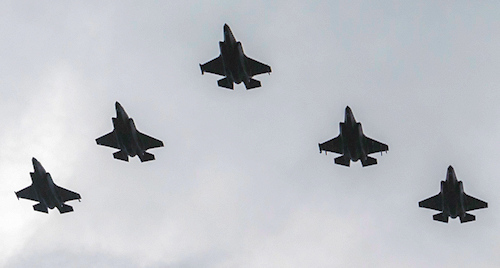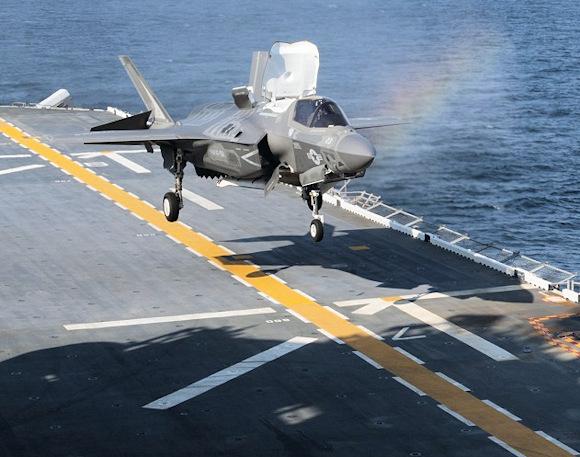In May of the 2002 Parliament approves the entry of Italy into the F-35 program, as a second-level partner. The expected industrial return for our country - in the SDD (System Development and Demonstration) phase alone - was around 800 million.
The partners were divided according to the investments made for the development phase. The 3 level, the lowest, included Canada (with a contribution of 150 million dollars); Denmark and Norway (125 million each); Turkey (150 million) and Australia (150 million). The second level includes the Netherlands (800 million) and Italy (1.028 million to be spread over 10 years). The United Kingdom is instead a partner of first level thanks to an investment par to 2,3 billions of dollars.
When we talk about aeronautical programs, especially if very complex and sophisticated, the risks of delays in deliveries, as well as increases in costs, increase exponentially.
In fact, the first Italian F-35A, assembled in the FACO (Final Assembly and Check Out) plant in Cameri - owned by the Italian Government but managed by Alenia Aermacchi in partnership with Lockheed Martin -, manages to make the first inaugural flight only in the 2015 . That of the Italian aircraft was the first flight of an F-35 outside the United States. While the B version completed the first official 30 2017 flight.
 Initially, Italy had planned an order for 131 aircraft, 69 F-35A (conventional take-off and landing version) and 62 F-35B (short take-off version and vertical landing, STOVL), only 21 of which for the Aviation of the Marina Militare - to go and set up the Flight Group of the first real Italian aircraft carrier (the CAVOUR) - so the rest would have been acquired by the Air Force.
Initially, Italy had planned an order for 131 aircraft, 69 F-35A (conventional take-off and landing version) and 62 F-35B (short take-off version and vertical landing, STOVL), only 21 of which for the Aviation of the Marina Militare - to go and set up the Flight Group of the first real Italian aircraft carrier (the CAVOUR) - so the rest would have been acquired by the Air Force.
At this point it is permissible to ask a question: What is the Air Force doing with version B? Which, compared to version A, has a lower internal fuel capacity than 350 kg and therefore, consequently, less autonomy; furthermore it has no GAU-22 / U cannon from 25 mm to 4 rotating rods and has a less spacious hold for transporting weapons ...
Precisely on the occasion of the first inaugural flight of the F-35B, Lockheed Martin, and not the Ministry of Defense, had declared that the first aircraft of the STOVL version would be destined to the Air Force and not to the Navy.
 The latest provisions, directly issued by the Minister of Defense Elisabetta Trenta (in the photo, left), assign the first two examples of F-35Bs to the Navy. This confirms the fact that it is very difficult to justify the allocation of STOVL aircraft to the Air Force since, given the long delivery times, the CAVOUR would risk remaining without aircraft on board (the HARRIER II PLUS will end their operational life no later than the 2025 / 2027).
The latest provisions, directly issued by the Minister of Defense Elisabetta Trenta (in the photo, left), assign the first two examples of F-35Bs to the Navy. This confirms the fact that it is very difficult to justify the allocation of STOVL aircraft to the Air Force since, given the long delivery times, the CAVOUR would risk remaining without aircraft on board (the HARRIER II PLUS will end their operational life no later than the 2025 / 2027).
As is well known, Arma Azzurra has no background in the use of vertical landing aircraft!
The motivation declared by the Air Force General Staff, regarding this choice, responded to the need, in the event of out-of-area redeployment, to be able to use improvised and small tracks. Theses among other things carried out, in the ʿ60 years of the last century by the RAF, to justify the design of the HARRIER GR.7.
However, this explanation appears to be quite singular since these are machines with a high technological level (and therefore subject to failures if they ingest large quantities of foreign bodies), they therefore need special tracks for take-off, properly sterilized.
In 2012, by the Monti Executive, the number of F-35 to be acquired is deducted. While leaving the share of F-35A (from 69 to 60) almost unchanged, the B version is more than halved (from 62 to 30 aircraft)!
It is clear that, in order to preserve the fixed wing component of the Navy, the quota of 21 aircraft could be left unchanged. This did not happen: the F-35Bs (15 AM and 15 MM) split equally.

However, 15 aircraft are not enough to equip the CAVOUR flight group!
In the 2022 the LHD TRIESTE will enter in line, an amphibious assault unit of 33.000 tons able (it is hoped) to transport a certain number of STOVL aircraft, with the task of providing direct support to the amphibious operations of the Projection Force from the Sea .
It is also true that the lean Defense Reports would not allow the acquisition of more than 20 / 25 F-35B, so making two flight groups (1 MM and 1 AM) would make no sense. Better then one flight group assigned to the Navy, with the possibility of ground redeployment in context joint (the operating costs of a group of 8 / 10 embarked aircraft are however lower than those for the same land-based rate).
At this point we allow ourselves to give a suggestion to the next Executive: there is no serious nation that has organic joint departments, the vehicles must belong to an Armed Force for logistical, training and legal reasons; there jointness instead it is necessary in the Commands to best employ, in a synergistic and integrated way, the resources of each Armed Force, when inserted in an interforce context. Any other interpretation is misleading as well as lacking logistical and operational features.
 A group of 25 STOVL would be more than sufficient for the needs of the Nation and would also result in significant savings both in terms of acquisition and training.
A group of 25 STOVL would be more than sufficient for the needs of the Nation and would also result in significant savings both in terms of acquisition and training.
A STOVL component, commissioned by the Air Force, is only a Trojan horse to return to the old Fascist law that claimed that all of this was flying under the organic command of the Air Force, a condition now overcome by historical events.
Finally, it would be appropriate to avoid the centralization of all the F-35Bs in the Amendola base, abandoning that of Grottaglie (which has a flight simulator, for the HARRIERS but adaptable), with a consequent increase in operating costs and training.
Photo: US Navy / Navy / Department of Defense / web












